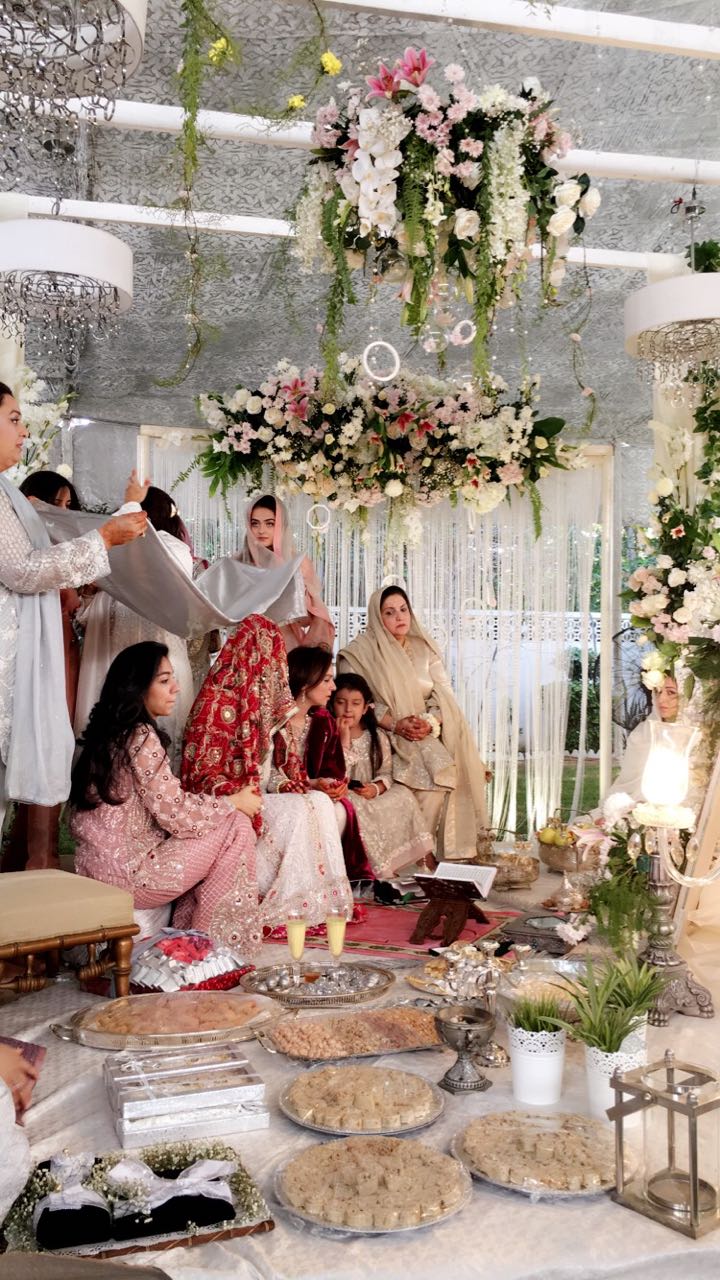The nikkah is the main part of the wedding which is the part when the bride and groom are actually getting married. This is where they seal the deal and the bride goes away to her new family. Both sides of the families come to the nikkah with a maulvi (Islamic priest) to represent both sides of the families. The nikkah is a contract between the couple where they consent their bond to each other. At a nikkah you are required to have an officiator and 2 witnesses.
Usually, nikkahs are a small event where you just invite the immediate family and follow the event with a dinner. Depending on the family, nikkahs are done at home or at a mosque. The nikkahs at a mosque are segregated and once the nikkah is over the husband is allowed to see the bride. The bride’s face is usually covered with veil and it is only removed by her husband after the nikkah is over.
Aarsi Mushaf Dikhana, also known as the munh dekhai is a ritual of “showing of the face” after the nikah ceremony. An embroidered shawl is generally held over the couple’s head and they are supposed to see each other in the mirror and the bride shows her face that is covered during the nikkah. The bride and groom share a piece of fruit and family and friends congratulate the couple and exchange gifts. Badam ka Sharbat (almond sherbert) is served to the guests.

My favorite type of nikkah is the Irani nikkah. At this nikkah, the bride is sitting on the floor on a prayer mat facing a mirror. When the nikkah is over the groom will come and join the bride to start all the traditions that take place. As soon as the groom removes the veil he is suppose to look at her through the mirror- that is the first look that he gets of her. The bride and groom feed each other honey which signifies sweetness into their marriage.

The decor at a nikkah is similar to one at a milad. There is a stage where the bride is sitting and everyone else is sitting opposite her. The bride is usually sitting with the Maid of Honor who is required to be married who then can guide her on post marriage duties.
Depending on the size of the event, the bride dresses really heavy or really light. Some brides even opt to wear extremely plain clothes and not wear a speck of make-up on their face. But then there are brides who like to go all out and wear bright colors.
At the end of this event, the ruksati will commence. This is the tradition when the bride says her final goodbyes to her family and officially leaves to the groom’s house. She is escorted by her husband and is required to walk underneath a Quran which is held by her brother or male cousin. At this point the bride and groom are married in the eyes of God and this the Bride’s farewell to her family. Small pranks are played on the groom to lighten the mood while delaying the bride’s departure, for example the bride’s friends and family will steal the grooms shoes. In order for the groom to get his shoes back, he must pay them a large some of money. Both sides negotiate a price that is suitable for the occasion. This tradition is called the Joota Chuppai.
At this event, it is best to dress modestly. You should make sure to bring a scarf or dupatta to cover your head during the prayer time.